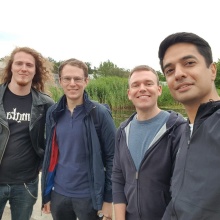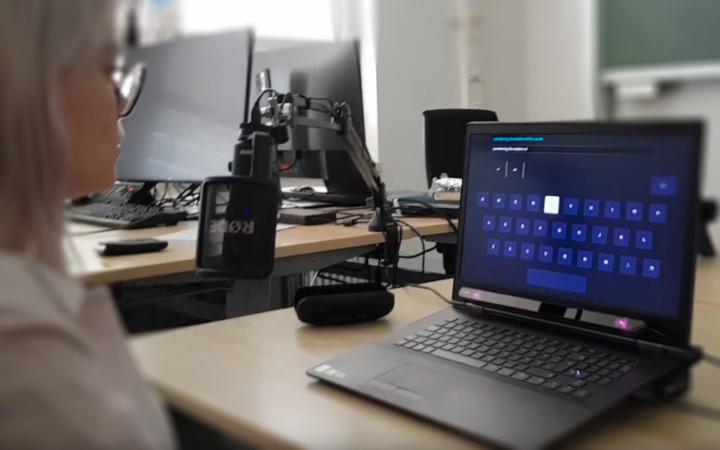More than one million people in Germany are affected by permanent motor impairment. For many of them, access to the Web is therefore difficult or even impossible. The researchers Dr. Raphael Menges, Ramin Hedeshy and Lukas Schmelzeisen from the Analytic Computing department at the University of Stuttgart have been working for over five years on the accessible operation of the Web and the understanding of digital content through AI. Together with Florian Lerch, a business economist from the Technical University of Munich, they want to bring their results to market.
For this purpose, the team has been funded by an EXIST transfer of research since September 2021 with more than 645,000 euros of funding from the German Federal Ministry for Economic Affairs and Energy (BMWi), which is co-financed by the European Social Fund (ESF). This will finance the four full-time positions of the founders for one and a half years as well as the required material resources.
Turning research into a product
The team can look back on the results of successful research from the past years. In particular, their research project "GazeTheWeb", a Web browser with gaze control, was able to convince participants, researchers, and experts with its intelligent understanding of Web pages and innovative interaction. The browser was used for over a month by thirty subjects with severe motor impairments in Greece and Israel as part of the European MAMEM project and is still used by some subjects today. GazeTheWeb has won five awards, e.g. for its usability at the Web for All Accessibility Challenge in Perth, for its innovative technical approach at TheWebConference, and for its digital relevance at Unitymedia's Digital Imagination Challenge. Building on this success, the Semanux team has explored other innovative interactions, such as combining touch and gaze control for fast and reliable text input, and combining non-voice communication through humming with gaze control for a rhythmic approach to contact-free operation of digital systems.
The funding from EXIST transfer of research now allows the team to bring their research results together in a product with the aim of making it ready for the market. The team will continue to use the laboratories and offices of the Analytic Computing department at the University of Stuttgart for practical work in the coming months.
Comprehensive support at the University of Stuttgart
The team emphasizes the outstanding support for their spin-off project at the University of Stuttgart. Dr. Raphael Menges summarizes: "Without the extensive support at the University of Stuttgart, we would not have succeeded in the complex application for the EXIST transfer of research. I would particularly like to emphasize the excellent support provided by our two mentors. Prof. Dr. Steffen Staab as head of the department Analytic Computing and one of the world's leading experts in the research area of the Semantic Web supports us as a scientific mentor. In addition, we can count on the advice of Prof. Dr. Alexander Brem as head of the Institute of Entrepreneurship and Innovation Science as a second mentor in aspects of entrepreneurship. In addition, we also receive great support from startup coaches at the Institute of Entrepreneurship and Innovation Science at the University of Stuttgart, its startup network, and the Cyber Valley Consortium."
Who is Semanux?
- Dr. Raphael Menges as project manager
- Ramin Hedeshy, works on human-computer interaction
- Lukas Schmelzeisen, works on machine learning
- Florian Lerch, works on business planning
Contact

Melanie Minderjahn
Career Service - Inner Development, Public Relations



